Wide shots, also known as long shots, give you a broader view of a scene, mixing characters and their surroundings. They’re super important in filmmaking! For instance, they can set the mood, establish the setting, and reveal how characters relate to their environment. Think about the sweeping landscapes in “The Lord of the Rings” — they help you feel the story. You’ll want to avoid mistakes like poor lighting or distractions in the background. By mastering these shots, you’ll elevate your films, drawing the audience into your world. Excited to learn how to perfect your wide shots?
Key Highlights
- Wide shots, or long shots, provide a broad view of scenes, establishing context and mood while immersing viewers in the setting.
- Types of wide shots include establishing shots, long shots, extreme wide shots, and aerial shots, each serving unique storytelling purposes.
- They enhance character relationships by revealing spatial dynamics and power hierarchies within shared environments.
- Wide shots evoke emotional responses, contrasting vulnerability in vast landscapes with warmth in intimate settings, guiding audience feelings.
- Effective techniques include incorporating leading lines, using the rule of thirds, and mindful lighting to elevate visual storytelling.
Definition of Wide Shots
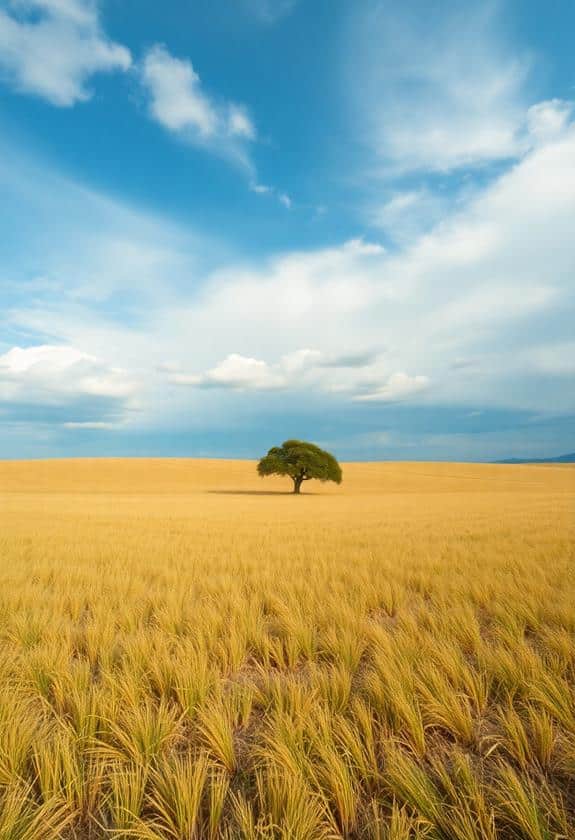
A wide shot, often referred to as a long shot, captures a broad view of a scene, placing subjects within their environment. Think of it as a friendly hug that welcomes everything around the characters. When you use a wide shot, you’re giving viewers a chance to see the context and feel the mood of the setting. It’s like when you watch a movie and feel like you’re right there on the street, or at the beach, surrounded by action. Choosing the right camera can enhance those wide shots considerably, especially discovering the best cameras for capturing stunning landscapes and vivid details.
In my early days of filmmaking, I remember struggling to get the full picture. I was so focused on the actors that I forgot about the beautiful park they were in. Once I switched to wide shots, everything changed! It made the story richer and more engaging.
When you plan your shots, don’t forget how wide shots can enhance safety too. They show viewers the space around characters, helping them understand potential dangers or obstacles. So, whether you’re shooting a backyard adventure or a thrilling chase scene, remember that wide shots are your best friend. They set the stage for excitement while keeping everyone aware of their surroundings!
Types of Wide Shots
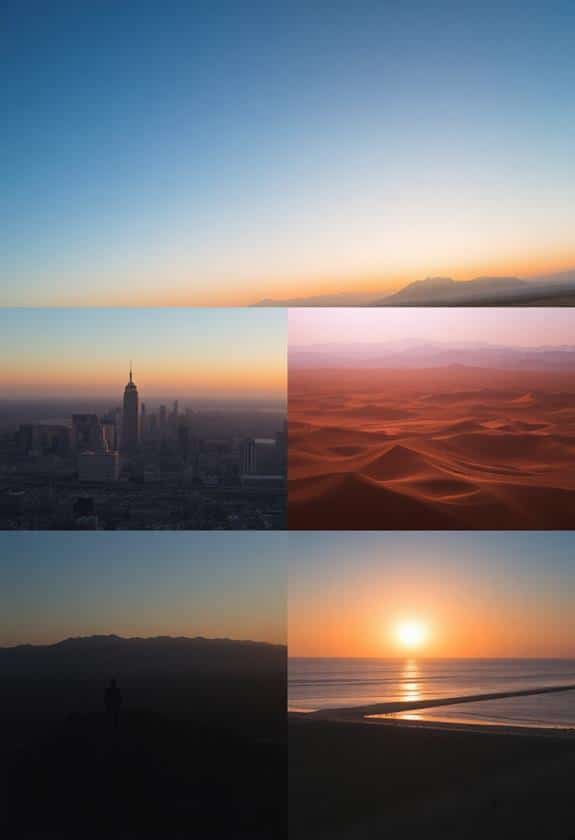
Wide shots often come in various forms, each serving a unique purpose in storytelling. One common type is the establishing shot, which sets the scene and gives viewers context about where the action is happening. Think of it like a friendly invitation to the world of your story, letting everyone know what to expect. Utilizing top drones for filmmakers can elevate these shots, providing stunning aerial perspectives that enrich the visual narrative and enhance the overall experience of top drones for filmmakers.
Another type is the long shot, which captures characters in their environment, emphasizing both the characters and their surroundings. This shot can help convey a sense of scale, like when you see a tiny figure against a vast landscape, reminding you how small we can feel in the big world.
Then there’s the extreme wide shot, often used for dramatic effect. Imagine a scene where a character stands alone in a huge field, making you feel their isolation. It’s like a cinematic hug—showing the character’s emotions while making the viewer consider their safety.
Lastly, the aerial shot, taken from above, provides a bird’s-eye view. It can give a sense of adventure, like soaring over a bustling city. Each type of wide shot contributes to the visual storytelling, offering safety and comfort while allowing your audience to explore new worlds.
Importance in Storytelling
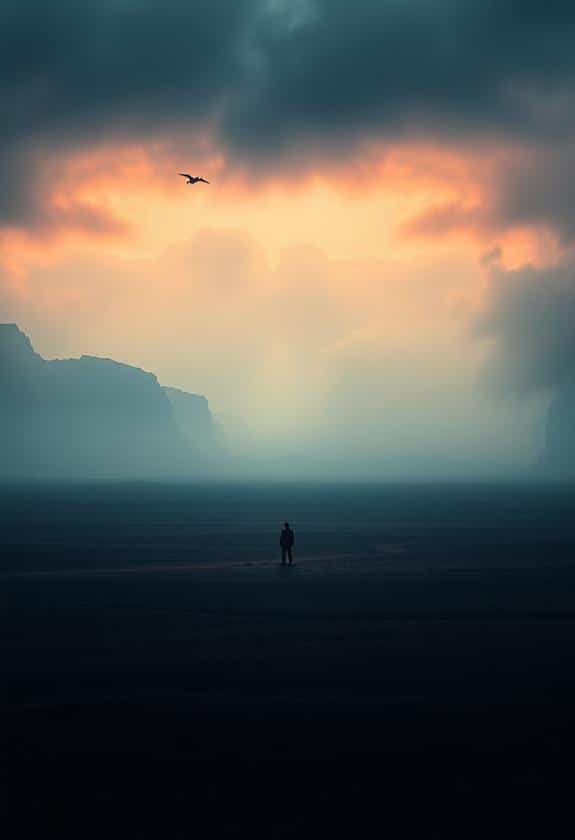
While filmmakers often focus on close-ups and medium shots to capture emotions and dialogues, wide shots play an essential role in storytelling by establishing context and immersing viewers in the narrative. Think of wide shots as the big picture—they help you see where the action is happening and who’s involved. Additionally, incorporating versatile equipment like a Vidpro SK-22 Dolly can enhance the smoothness of your wide shots, allowing for dynamic camera movements that further enrich the storytelling experience.
Here’s why they’re so important:
- Establishes Scale: You get to see the size of the setting, which can affect how you feel about the story.
- Creates Atmosphere: Wide shots can set the mood, whether it’s a sunny day or a stormy night.
- Highlights Relationships: They show how characters interact with each other and their environment.
- Offers Perspective: You can see the characters’ challenges in relation to their surroundings, making their struggles more relatable.
- Invites Reflection: A wide shot can give you a moment to breathe and think about what’s happening.
When I first started filming, I had a blast experimenting with wide shots. They opened up my scenes in ways I never imagined! So, next time you’re watching a film, pay attention to those wide shots—they tell a story all on their own!
Establishing Context and Setting
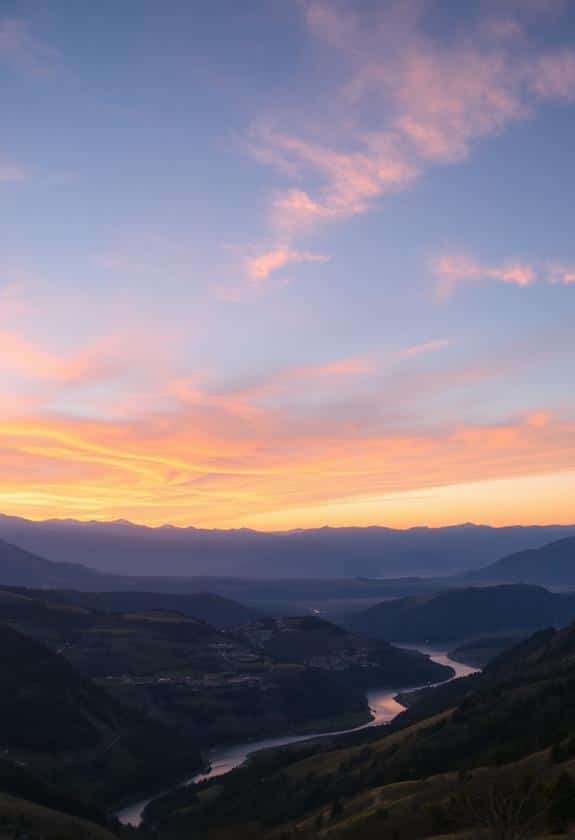
Establishing context and setting is essential for immersing viewers in a film’s world. When you shoot a wide shot, it’s like giving your audience a warm hug, inviting them into the scene. Think about the last time you watched a movie that transported you somewhere new. Those wide shots help you feel safe and grounded, showing the environment before diving into the action. Using proper lighting techniques, such as illuminating your space with softbox lights, can enhance the visual appeal of these wide shots and create a more inviting atmosphere.
Imagine a cozy little town with charming houses and friendly faces. A wide shot captures that atmosphere, letting viewers soak it all in. You get a sense of where the story unfolds, and it’s comforting, right? It’s like walking into a friend’s home—everything feels familiar and welcoming.
Also, don’t forget about the power of nature! A sweeping view of a majestic landscape can evoke emotions, making your audience feel small yet connected. Remember when you felt awe standing atop a mountain or gazing at a breathtaking sunset? That’s the kind of feeling you want to replicate in your film.
Enhancing Character Relationships
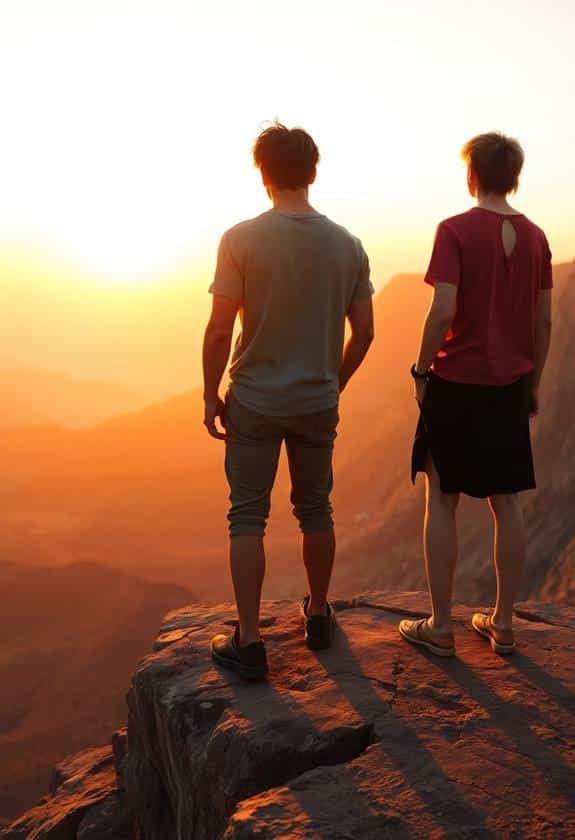
A well-placed wide shot can greatly deepen character relationships by visually connecting them to their environment and each other. Have you ever noticed how a simple wide shot can reveal so much about characters? It’s like giving the audience a backstage pass to their world! When you frame characters in a broader scene, you show their interactions and how they fit into their surroundings, which can be enhanced by using a camera with superior resolution and frame rate to capture every detail. This can create a sense of intimacy or distance, making their relationships feel more real.
Here are some ways wide shots can enhance character relationships:
- Show Dynamics: You can capture the space between characters, hinting at connection or conflict.
- Establish Context: These shots place characters within their environment, highlighting their shared experiences.
- Visual Hierarchy: By adjusting the distance, you can emphasize who’s more powerful or vulnerable in a situation.
- Highlight Actions: You can show characters working together or apart, revealing their dynamics in a single frame.
- Create Mood: A wide shot can set the tone, whether it’s peaceful or tense, impacting how you perceive their relationships.
Emotional Impact of Wide Shots
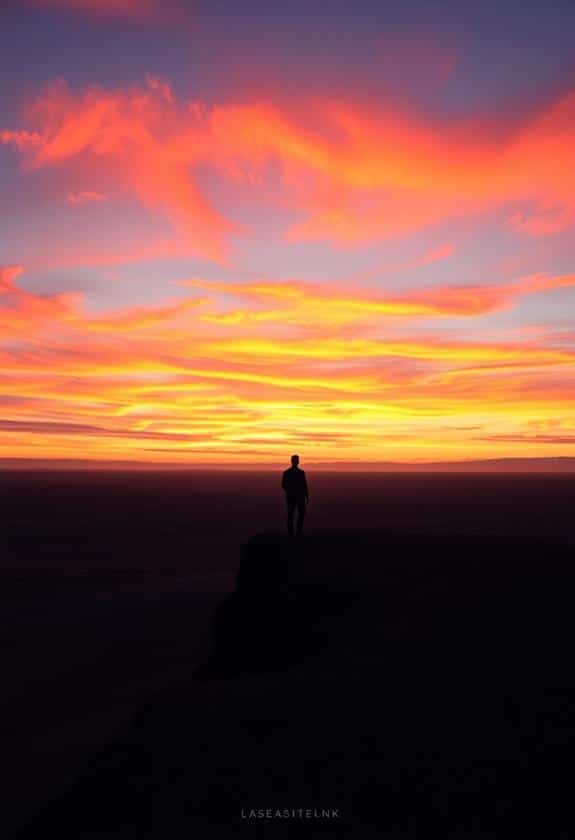
Wide shots don’t just enhance character relationships; they also evoke powerful emotions in the audience. When you’re watching a film, a wide shot can make you feel small and vulnerable, especially when it shows a character alone in a vast landscape. It’s like that time I hiked up a mountain and felt overwhelmed by how tiny I was against nature. Those shots can also create a sense of isolation, making you empathize with the character’s struggles.
On the flip side, wide shots can bring warmth and connection, too. Imagine a family gathered in a cozy living room, laughter filling the air. You can almost feel the love radiating from the screen, right? It’s these contrasts that add depth to the storytelling.
In my own filmmaking journey, I’ve learned that using wide shots thoughtfully can really enhance the emotional experience for viewers. You can guide their feelings, whether it’s joy, sadness, or even nostalgia. So, as you craft your scenes, consider how a wide shot can pull your audience into the emotional world you’re creating. It’s all about connecting with them in a way that feels safe and relatable.
Techniques for Effective Wide Shots
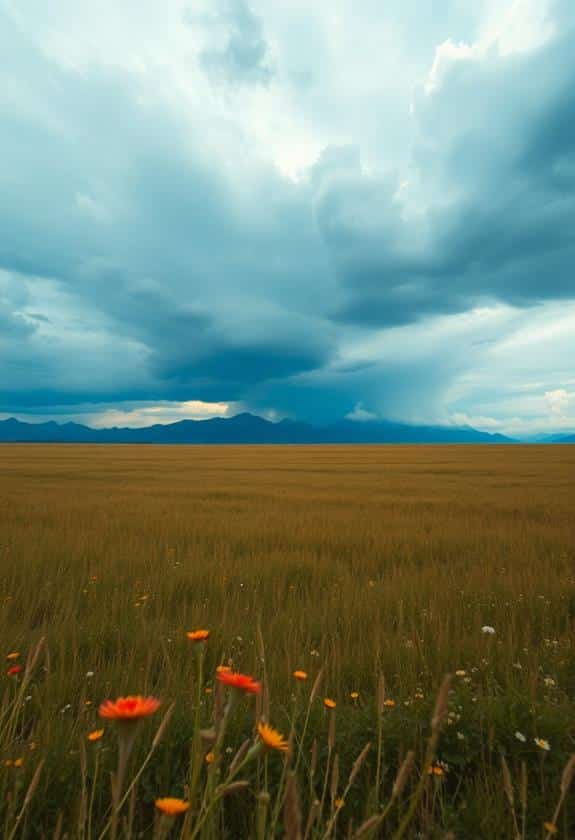
Capturing the essence of a scene often hinges on the placement and composition of your wide shots. It’s about finding that perfect balance between storytelling and visual appeal. Here are some techniques to help you nail those wide shots:
- Know your subject: Before you even set up your shot, understand what you want to emphasize. Is it a landscape or a bustling crowd?
- Use leading lines: Incorporate natural lines in your scene to guide the viewer’s eye toward your main subject. It adds depth and interest!
- Consider the rule of thirds: Divide your frame into a grid and place important elements along those lines or at their intersections for a balanced composition.
- Experiment with angles: Sometimes, a slight change in perspective can elevate your shot. Don’t be afraid to get low or shoot from above!
- Be mindful of lighting: Good lighting can transform a wide shot. Use the golden hour for that soft, warm glow.
I remember my first wide shot—let’s just say it involved a lot of trial and error. But with practice, you’ll see your unique style shine through! Keep shooting, and have fun!
Common Mistakes to Avoid
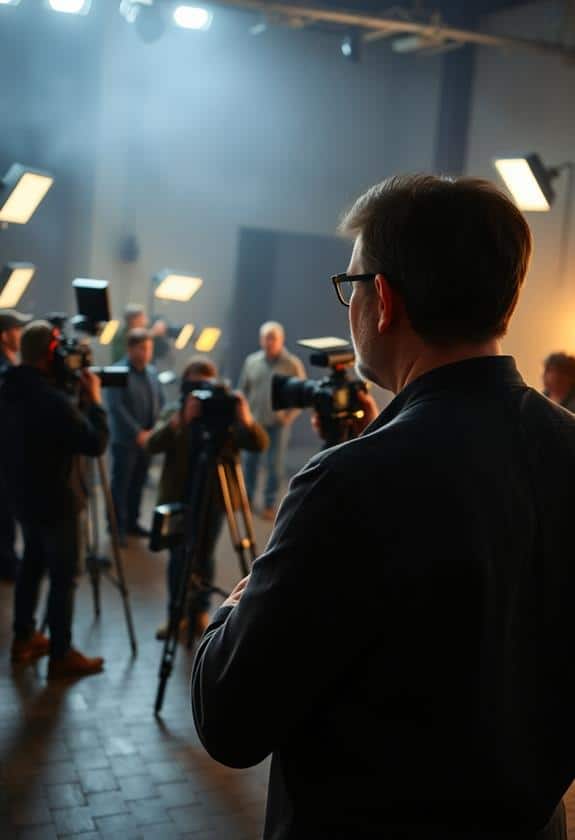
When shooting wide shots, it’s easy to overlook some common pitfalls that can detract from your vision. One mistake is failing to contemplate the framing. You might think a wide shot captures everything, but if the focal point is lost in the background, your message gets muddled. In my early days, I learned this the hard way when a beautiful sunset overshadowed the actors.
Another common error is not accounting for distractions. Whether it’s a passing car or a random person in the frame, these elements can pull viewers away from your story. Trust me, I’ve had a few shots ruined by unexpected guests!
Here’s a handy table to keep these mistakes in mind:
| Mistake | Solution |
|---|---|
| Poor framing | Keep the focus clear |
| Background distractions | Scout locations beforehand |
| Unintentional movement | Use a tripod for stability |
| Ignoring lighting | Test your shot before filming |
Examples in Popular Films
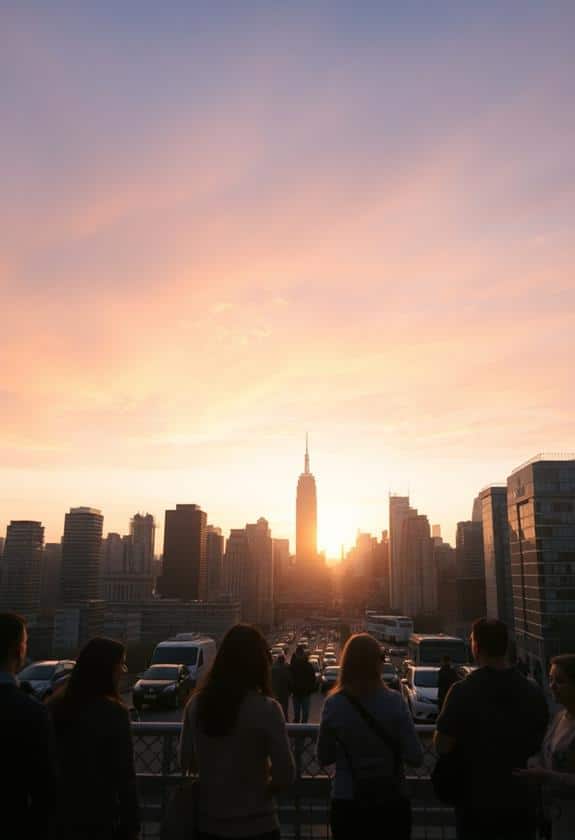
Mastering the art of wide shots can elevate your storytelling, as seen in numerous popular films. These shots create a powerful sense of place and context, drawing viewers into the world you’ve crafted. Think about those moments that stick in your mind long after the credits roll. Here are some great examples:
- “The Lord of the Rings”: The sweeping landscapes of Middle-earth transport you to another world.
- “Inception”: Wide shots of Paris bending and folding leave you awestruck and confused, just like the characters.
- “The Revenant”: Nature’s raw beauty is showcased, enhancing the film’s intense survival theme.
- “Gravity”: The vastness of space is beautifully captured, emphasizing isolation.
- “The Sound of Music”: The iconic hills of Austria invite you into a joyful journey.
When you use wide shots effectively, you not only set the scene but also evoke emotion. I remember struggling with this in my early projects, but now I see how much a single wide shot can say. So, next time you’re planning your film, think big! Your audience will appreciate the view.
Tips for Filmmakers
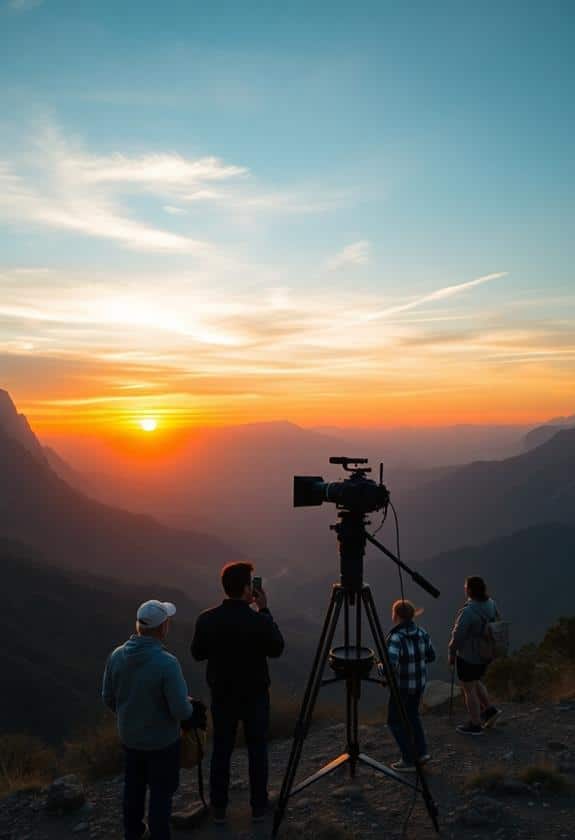
Wide shots are more than just stunning visuals; they require thoughtful planning and execution to truly enhance your film. When you’re setting up a wide shot, consider your location carefully. Make sure it’s safe for your crew and talent. You don’t want anyone tripping over cables or stepping into a busy street while you’re capturing that perfect scene!
Next, think about the elements in your frame. Use the environment to tell a story. For instance, if you’re shooting a character alone in a vast field, it can symbolize their loneliness. I once filmed a scene in a park, and the wide shot showed how small my character felt amidst towering trees.
Lighting is key, too. Natural light can create stunning effects, but pay attention to the time of day. The golden hour—right before sunset—is perfect for capturing soft, warm light.
Frequently Asked Questions
How Do Wide Shots Differ From Other Shot Types?
Wide shots differ from other types because they capture a broader view of the scene, showing both the subject and its surroundings. While close-ups focus on details, wide shots let you see the bigger picture, setting the mood and context. Think of it like telling a story: sometimes you need to zoom in on a character’s face, but other times, you want everyone to see the entire playground where the action happens!
Can Wide Shots Be Effective in Documentaries?
Wide shots can be super effective in documentaries. They capture the big picture, showcasing vast landscapes or crowded events, which helps you feel the atmosphere. Imagine a bustling market or a serene nature scene; it pulls you in. Plus, it sets the stage for the story. When you see people in their environment, it adds depth and context, making their experiences more relatable. So, don’t shy away from using them in your projects!
What Equipment Is Best for Shooting Wide Shots?
When you’re aiming for stunning wide shots, you’ll want a camera with a good lens, like a wide-angle lens, that captures more of the scene. A sturdy tripod helps keep your shots steady, especially if you’re shooting in low light. Don’t forget about your drone! It can give you incredible aerial perspectives. I remember using a wide lens on a school project, and it really made the scenery pop! Keep experimenting!
Are Wide Shots Suitable for All Film Genres?
Imagine stepping back to see the whole picture—it’s just like that with wide shots! They’re great for many genres, like adventure, where you want to showcase vast landscapes, or even in comedies, where group dynamics shine best. While they might not fit every horror scene’s eerie vibe, they certainly have their place. So, don’t shy away from using them; they can add depth and context to your storytelling!
How Do I Transition From a Wide Shot to Close-Ups?
Shifting from a wide shot to close-ups can be super effective! Start with a smooth pan or zoom, drawing the viewer in. You could also cut to a close-up right after a character delivers an emotional line, making it feel intimate. I once did this in a school project, and it really brought the audience closer to the characters. Just remember, timing is key—you want that connection to feel natural and engaging!
Conclusion
Wide shots are like the superheroes of filmmaking, saving scenes by giving viewers a sense of space and context. They help you see the big picture, literally and figuratively! When you use wide shots, you’re not just filling the frame; you’re telling a story about the world and the characters in it. So, next time you’re behind the camera, remember to embrace those wide shots! They can transform your film from ordinary to absolutely extraordinary!




